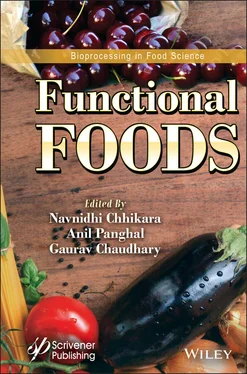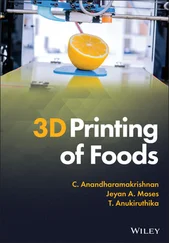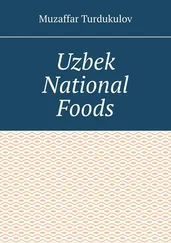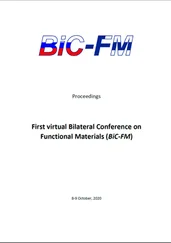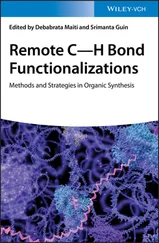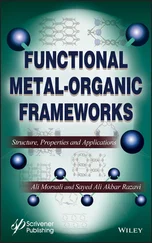Table 3.1 Some cereal-based beverages [62, 274–278].
| Beverage name |
Origin |
Cereals used in the preparation of the beverage |
| Ambil |
India |
Ragi flour and cooked rice |
| Boza |
Turkey |
Maize, millet, wheat, and barley |
| Gowé |
Benin |
Sorghum or maize or millet |
| Mahewu |
South Africa |
Maize meal, wheat flour |
| Borde |
Ethiopia |
Sorghum, maize, finger millet, wheat, and barley |
| Mahewu |
South Africa |
Maize meal and wheat flour |
| Bushera |
Uganda |
Millet or sorghum |
| Togwa |
Eastern Africa |
Maize flour, finger millet |
| Obiolor |
Nigeria |
Sorghum, millet |
| Cachiri |
Brazil |
Maize |
| Pozol |
Mexico |
Maize |
| Acupe |
Venezuela |
Maize |
| Fubá |
Brazil |
Maize |
| Agua-agria |
Mexico |
Maize |
| Napú |
Peru |
Maize |
Today, due to the increase in obesity and chronic diseases, the world has witnessed a marked growth in the consumption of functional foods, and different healthy food formulations need to be developed. Particularly, cereal products containing soluble fibers and antioxidants stand out with their use as ingredients in the creation of new functional food formulations. The cereals presented in this chapter are used for preparing food items that share similarities with traditional food items and are included in normal human diets, as well as having positive effects on health. Changing dietary habits by encouraging the increased consumption of functional foods can reduce healthcare expenditures. Today, it is not easy to develop different cereal-based functional foods while ensuring that they are acceptable to the consumer. For this purpose, newer techniques for processing cereals need to be invented.
1. Poli, A., Barbagallo, C.M., Cicero, A.F.G., Corsini, A., Manzato, E., Trimarco, B., Bernini, F., Visioli, F., Canzone, G., Crescini, C., de Kreutzenberg, S., Ferrara, N., Gambacciani, M., Ghiselli, A., Lubrano, C., Marelli, G., Marrocco, W., Montemurro, V., Parretti, D., Pedretti, R., Perticone, F., Stella, R. & Marangoni, F., “Nutraceuticals and functional foods for the control of plasma cholesterol levels. An intersociety position paper”. Pharmacol. Res ., 134, 51–60, 2018.
2. Word Health Organization (WHO), Word Health Organization global strategy on diet, physical activity and health, http://www.scrivenerpublishing.com/guidelines.php, 2004.
3. Reis, F. S., Martins, A., Vasconcelos, M. H., Morales, P. & Ferreira, I. C. F. R., “Functional foods based on extracts or compounds derived from mushrooms”. Trends Food Sci. Technol ,. 66, 48–62, 2017.
4. Krystallis, A., Maglaras, G. & Mamalis, S., “Motivations and cognitive structures of consumers in their purchasing of functional foods”. Food Qual. Prefer ., 19, 525–538, 2008.
5. Szakály, Z., Kovács, S., Pető, K., Huszka, P. & Kiss, M., “A modified model of the willingness to pay for functional foods”. Appetite , 138, 94–101, 2019.
6. Jasák, H. Ö., Funkcionális élelmiszerek fogyasztását befolyásoló attitűdök vizsgálata (Analyses of attitudes that affect the consumption of functional foods). J. Cent. Eur. Green Innov ., 3, 95–112, 2015.
7. Huggett, A. C. & Schilter, B., “Research needs for establishing the safety of functional foods”. Nutr. Rev ., 54, S143–S148, 1996.
8. Charalampopoulos, D., Wang, R., Pandiella, S. S. & Webb, C., “Application of cereals and cereal components in functional foods: A review”. Int. J. Food Microbiol ., 79, 131–141, 2002.
9. Sanders, M. E., “Overview of functional foods: emphasis on probiotic bacteria”. Int. Dairy J ., 8, 341–347, 1998.
10. Kwak, N. S. & Jukes, D. J., “Functional foods. Part 1: the development of a regulatory concept”. Food Control ., 12, 99–107, 2001.
11. Dalle Zotte, A. & Szendro, Z., “The role of rabbit meat as functional food”. Meat Sci ., 88, 319–331, 2011.
12. Tapsell, L. “Functional foods: an Australian perspective”. Nutr. Diet . 65, S23-S26 2008.
13. Verschuren, P. M., “Functional foods: scientific and global perspectives”. Br . J. Nutr ., 88, S125–S130, 2002.
14. Zhang, W., Xiao, S., Samaraweera, H., Lee, E. J. & Ahn, D. U., “Improving functional value of meat products”. Meat Sci ., 86, 15–31, 2010.
15. Arai, S., “Studies on functional foods in Japan-state of the art”. Biosci. Biotechnol. Biochem ., 60, 9–15, 1996.
16. Decker, E. A. & Park, Y., “Healthier meat products as functional foods”. Meat Sci ., 86, 49–55, 2010.
17. Fogliano, V. & Vitaglione, P., “Functional foods: planning and development”. Mol. Nutr. Food Res ., 49, 256–262, 2005.
18. Bigliardi, B. & Galati, F., “Innovation trends in the food industry: the case of functional foods”. Trends Food Sci. Technol ., 31, 118–129, 2013.
19. Domínguez Díaz, L., Fernández-Ruiz, V. & Cámara, M., An international regulatory review of food health-related claims in functional food products labeling. J. Funct. Foods , 68, 103896, 2020.
20. Grajek, W., Olejnik, A. & Sip, A., Probiotics, prebiotics and antioxidants as functional foods. Acta Biochim. Pol ., 52, 665–671, 2005.
21. Al-Sheraji, S. H., Ismail, A., Manap, M. Y., Mustafa, S., Yusof, R. M. & Hassan, F. A., Prebiotics as functional foods: a review. J. Funct. Foods , 5, 1542–1553, 2013.
22. Ötles, S. & Cagindi, Ö., Cereal based functional foods and nutraceuticals. Acta Sci. Pol. Technol. Aliment ., 5, 107–112, 2006.
23. Slavin, J. L., Mechanisms for the impact of whole grain foods on cancer risk. J. Am. Coll. Nutr ., 19, 300S-307S, 2000.
24. Liu, R. H., Health benefits of fruit and vegetables are from additive and synergistic combinations of phytochemicals. Am. J. Clin. Nutr ., 78, 517S-520S, 2003.
25. Liu, R. H., Potential synergy of phytochemicals in cancer prevention: mechanism of action. J. Nutr ., 134, 3479S-3485S, 2004.
26. Liu, R. H., Whole grain phytochemicals and health. J. Cereal Sci ., 46, 207–219, 2007.
27. Anderson, J. W., Whole grains and coronary heart disease: the whole kernel of truth. Am. J. Clin. Nutr ., 80, 1459–1460, 2004.
28. Seal, C. J., Whole grains and CVD risk. Proc. Nutr. Soc ., 65, 24–34, 2006.
29. De Munter, J. S. L., Hu, F. B., Spiegelman, D., Franz, M. & Van Dam, R. M., Whole grain, bran, and germ intake and risk of type 2 diabetes: A prospective cohort study and systematic review. PLoS Med ., 4, 1385–1395, 2007.
30. Adlercreutz, H., Lignans and human health. Crit. Rev. Clin. Lab. Sci ., 44, 483–525, 2007.
31. Ye, E. Q., Chacko, S. A., Chou, E. L., Kugizaki, M. & Liu, S., Greater wholegrain intake is associated with lower risk of type 2 diabetes, cardiovascular disease, and weight gain. J. Nutr ., 142, 1304–1313, 2012.
32. Cho, S. S., Qi, L., George, C., Fahey, J. R. & Klurfeld, D. M., Consumption of cereal fiber, mixtures of whole grains and bran, and whole grains and risk reduction in type 2 diabetes, obesity, and cardiovascular disease. Am. J. Clin. Nutr ., 98, 594–619, 2013.
33. Bach Knudsen, K. E., Nørskov, N. P., Bolvig, A. K., Hedemann, M. S. & Laerke, H. N., Dietary fibers and associated phytochemicals in cereals. Mol. Nutr. Food Res ., 61, 1600518, 2017.
Читать дальше
